Chanel
Flight of Fancy: Chanel Calibre 5
Proving it is far more than a one-trick pony, Chanel soon unveiled the Calibres 2 and 3 in the Premiere Camelia Skeleton and the Boy.friend Skeleton respectively. They were a pair of skeletonized time-only form movements with equally considered and distinctive constructions characterized by circularity. The Calibre 3 even spawned a 3.1 version in the J.12 X-ray wherein the movement plate and bridges were made entirely from sapphire.
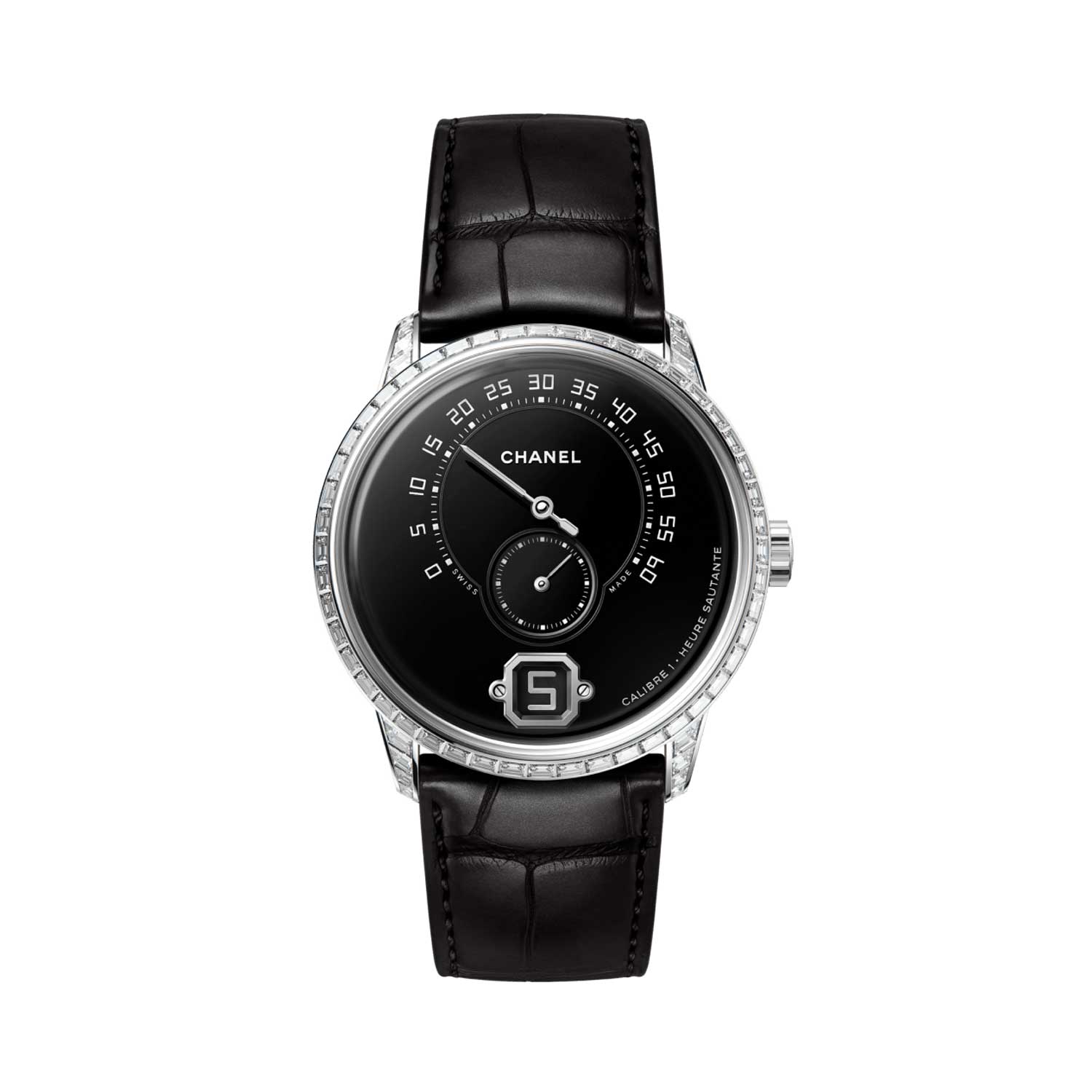
Monsieur de Chanel fitted with Calibre 1
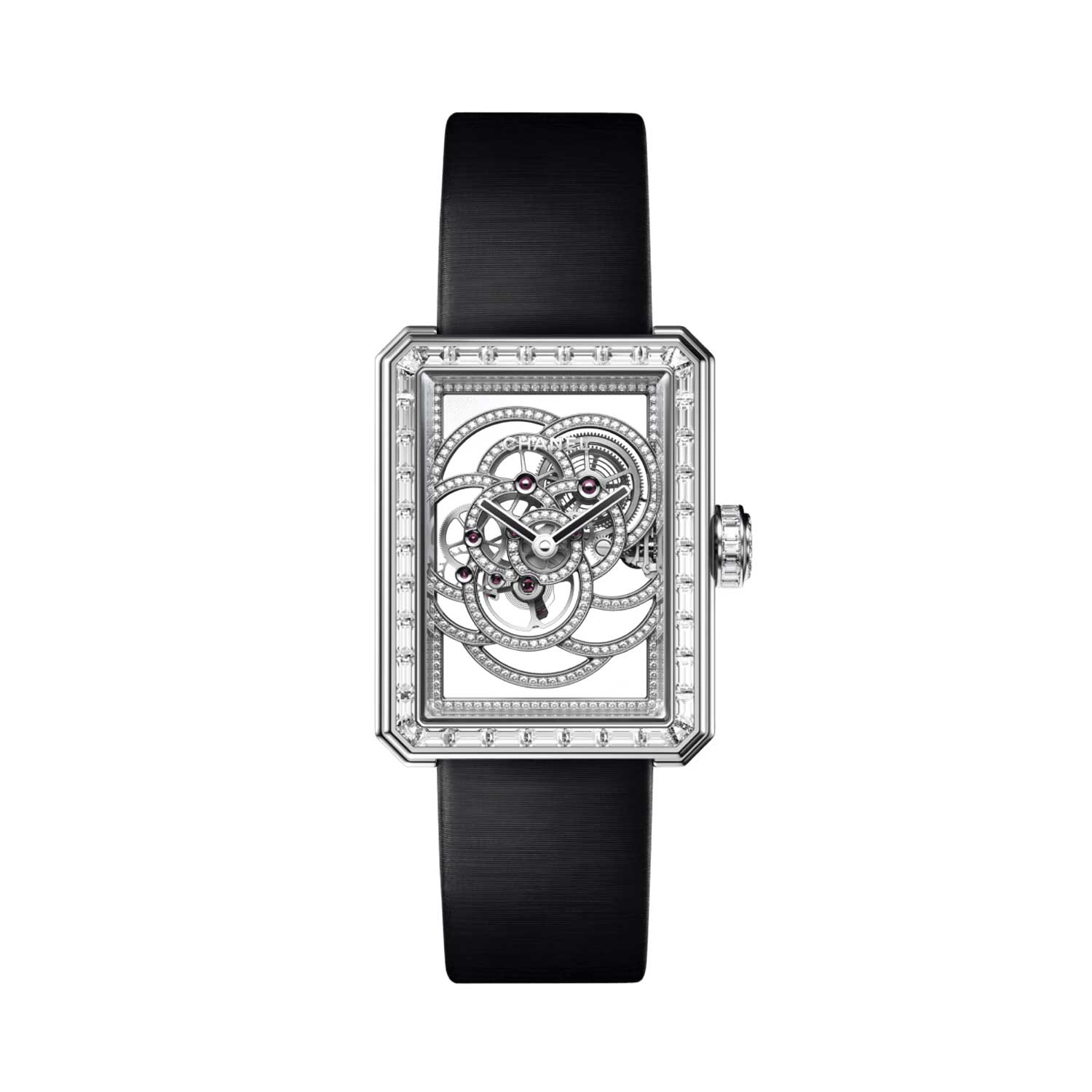
Premiere Camelia Skeleton fitted with Calibre 2
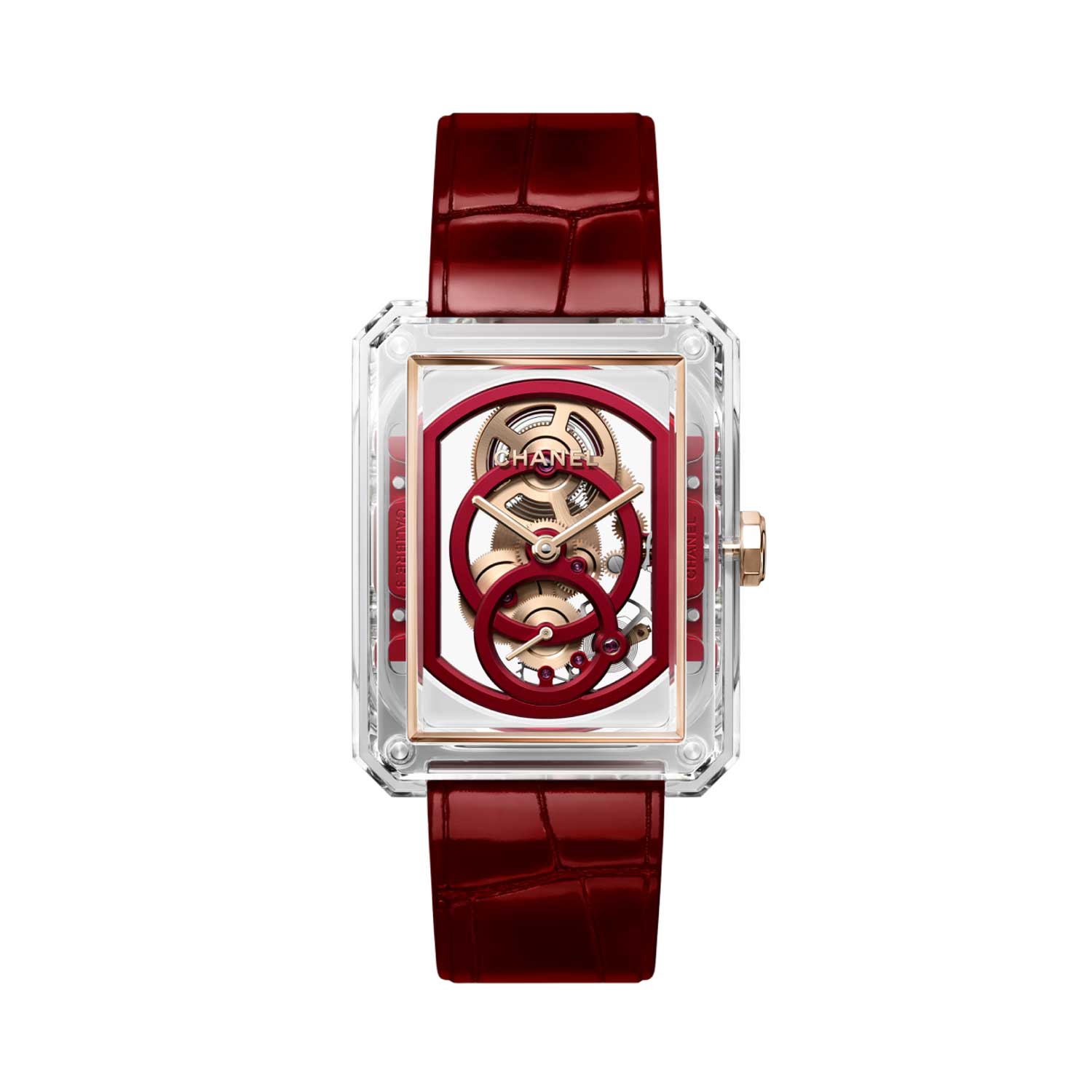
Boy.friend Skeleton fitted with Calibre 3
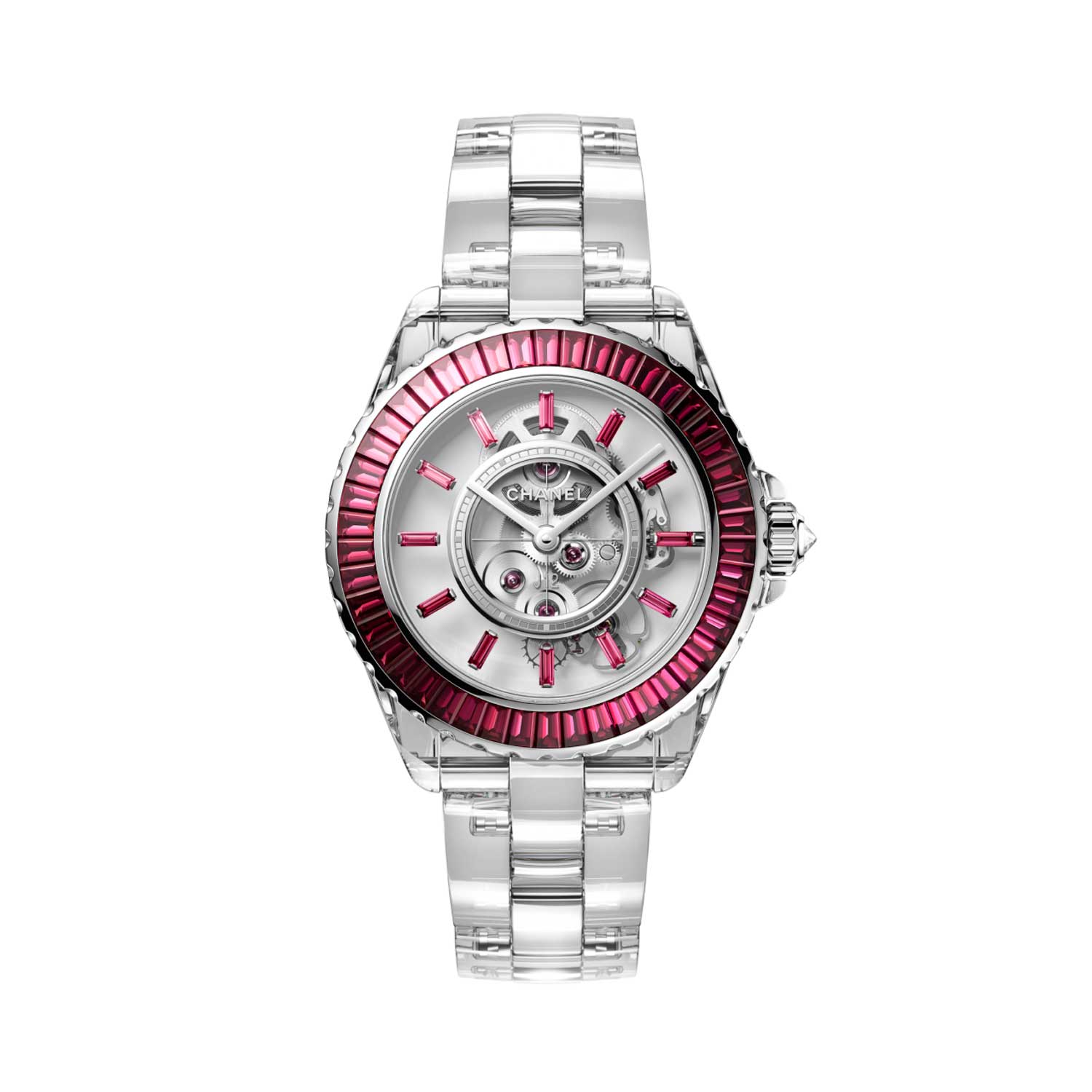
J.12 X-ray fitted with Calibre 3.1
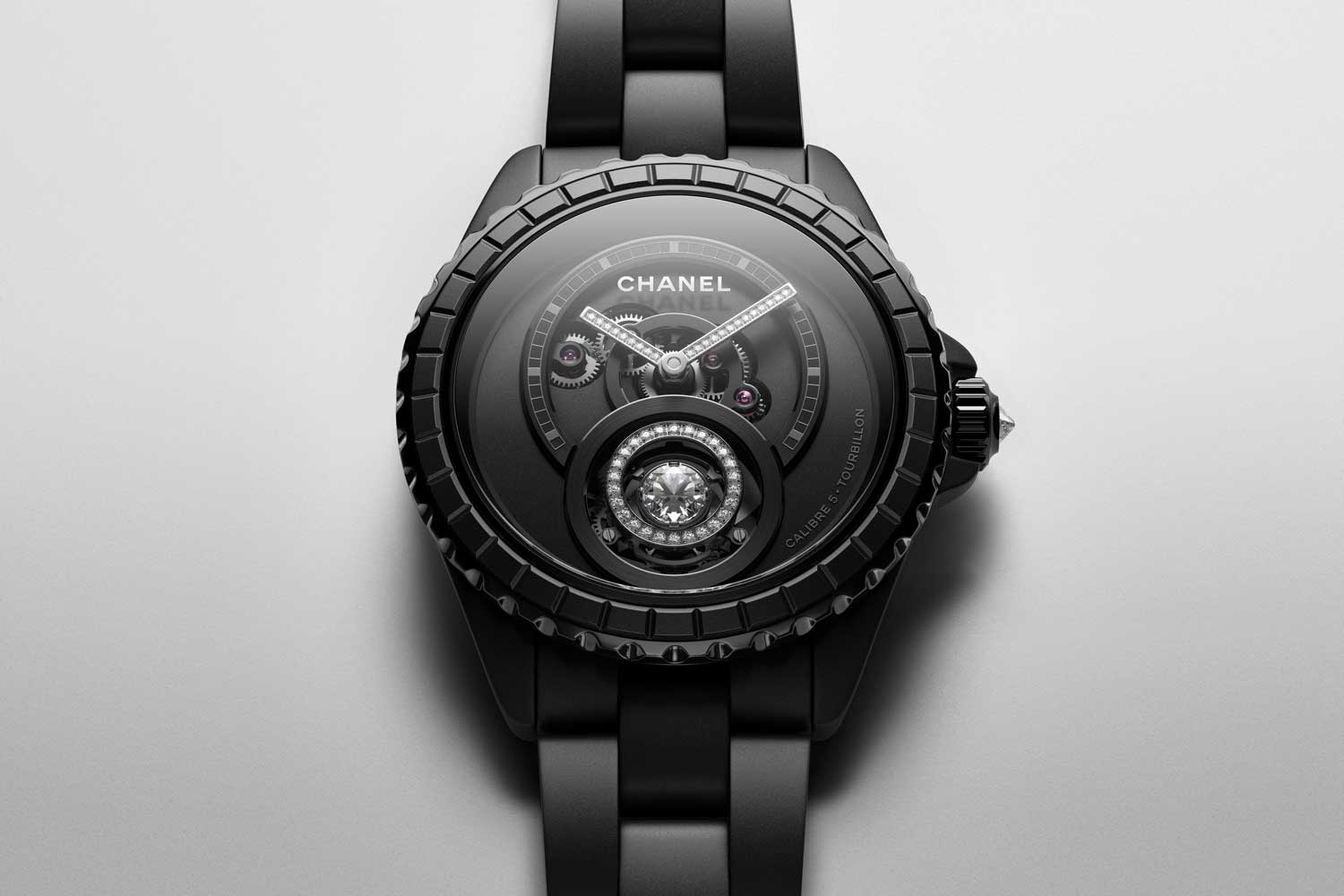
J12 Diamond Tourbillon

Arnaud Chastaingt, Director of the Chanel Watchmaking Creation Studio
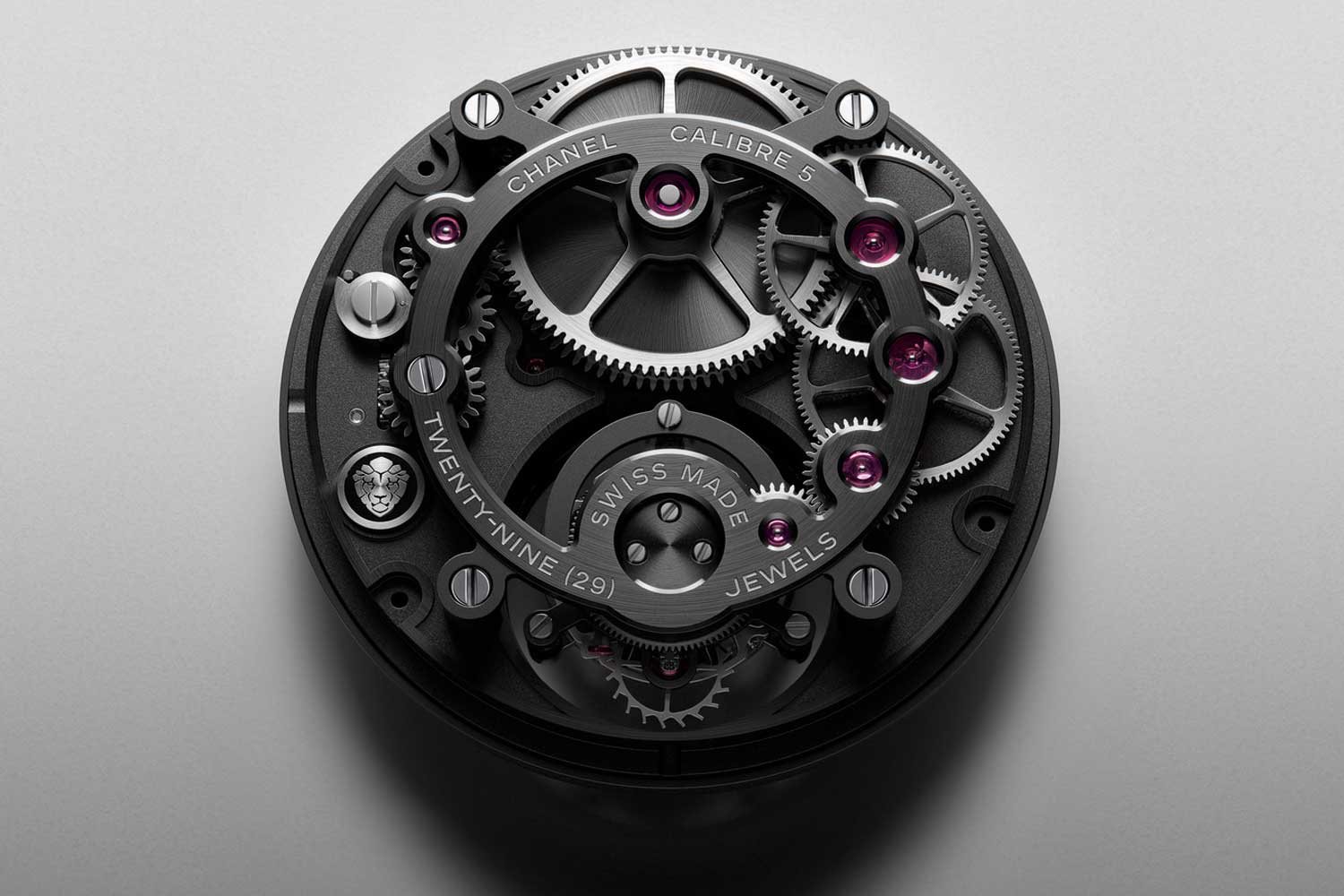
Calibre 5
The Devil in the Details
Often framed as a virtue in modern design is the principle of form following, rather than determining, function, but there is much to be appreciated when engineering is critically rethought and furthermore optimized to achieve aesthetic goals.
As with the Calibre 1, the exemplary architecture of the Calibre 5 is easy to appreciate, but what’s perhaps less obvious is the minute but significant steps taken to arrive at its beauty. As you’ll come to find, every aspect of the movement has been meticulously considered in the pursuit of finer aesthetics and thinness.
The J12 Diamond Tourbillon features a classic layout with the mainspring barrel located at 12 o’clock, while the tourbillon regulator is displayed in an aperture at six o’clock. Typically, in most tourbillon watches with such a configuration, the gear train traverses the central axis of the movement with the second wheel located right in the center — as it turns once per hour — to drive the minute hand directly. This construction results in additional height due to the thickness of the overlapping components and their necessary running clearances.
However, in the Calibre 5, the gear train is instead arranged at the edge of the movement in order to preserve its circular layout. The effect of this arrangement is a thinner watch; the movement clocks in at just 6.25mm in height. Spreading out the wheels on the same plane optimizes the volume of the movement while enabling more room for more important elements: the barrel and the tourbillon.
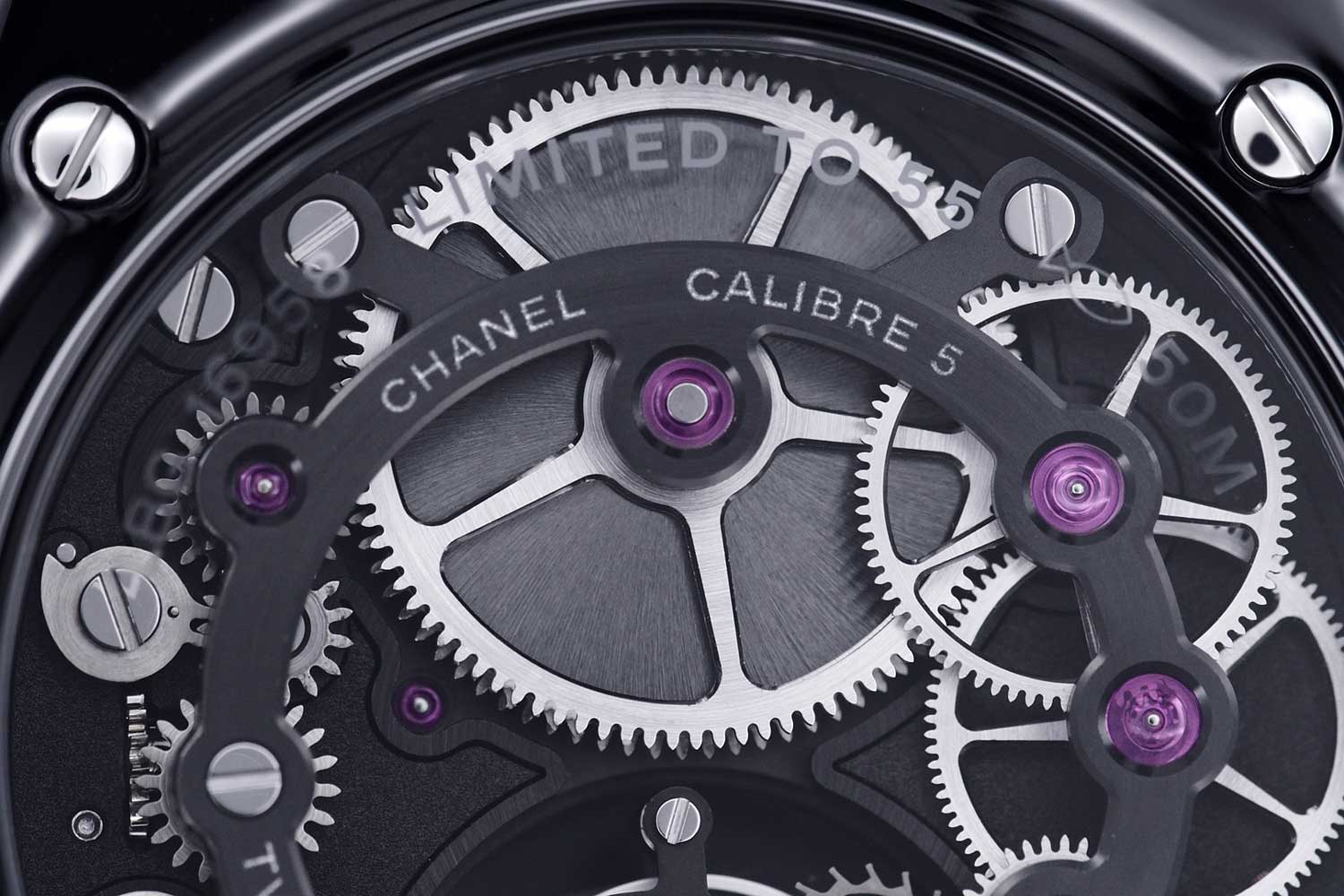
A large mainspring barrel occupies half the movement’s diameter
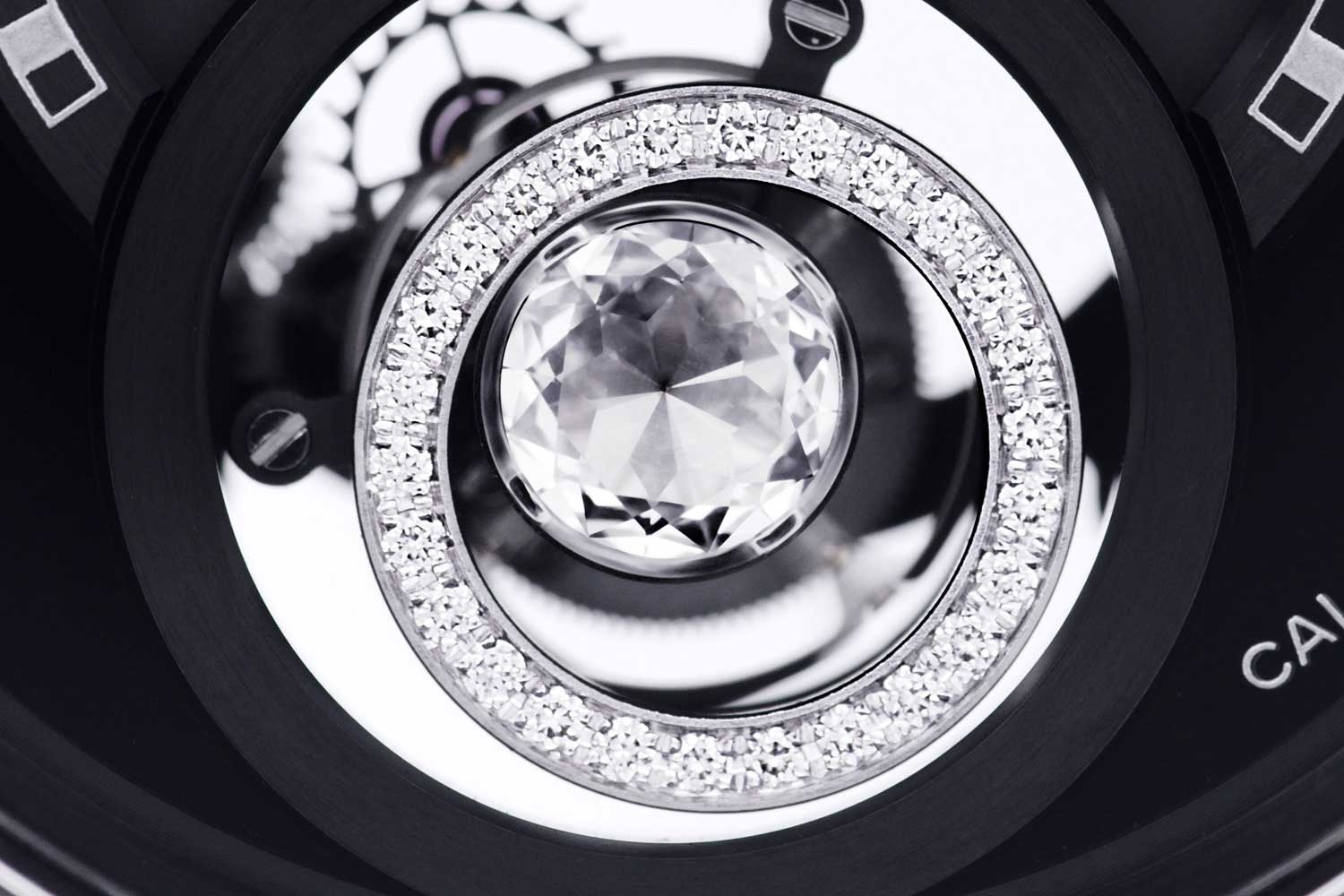
A 0.18-carat solitaire diamond with 65 facets is set at the center of the tourbillon cage that is framed by 26 round brilliant-cut diamonds
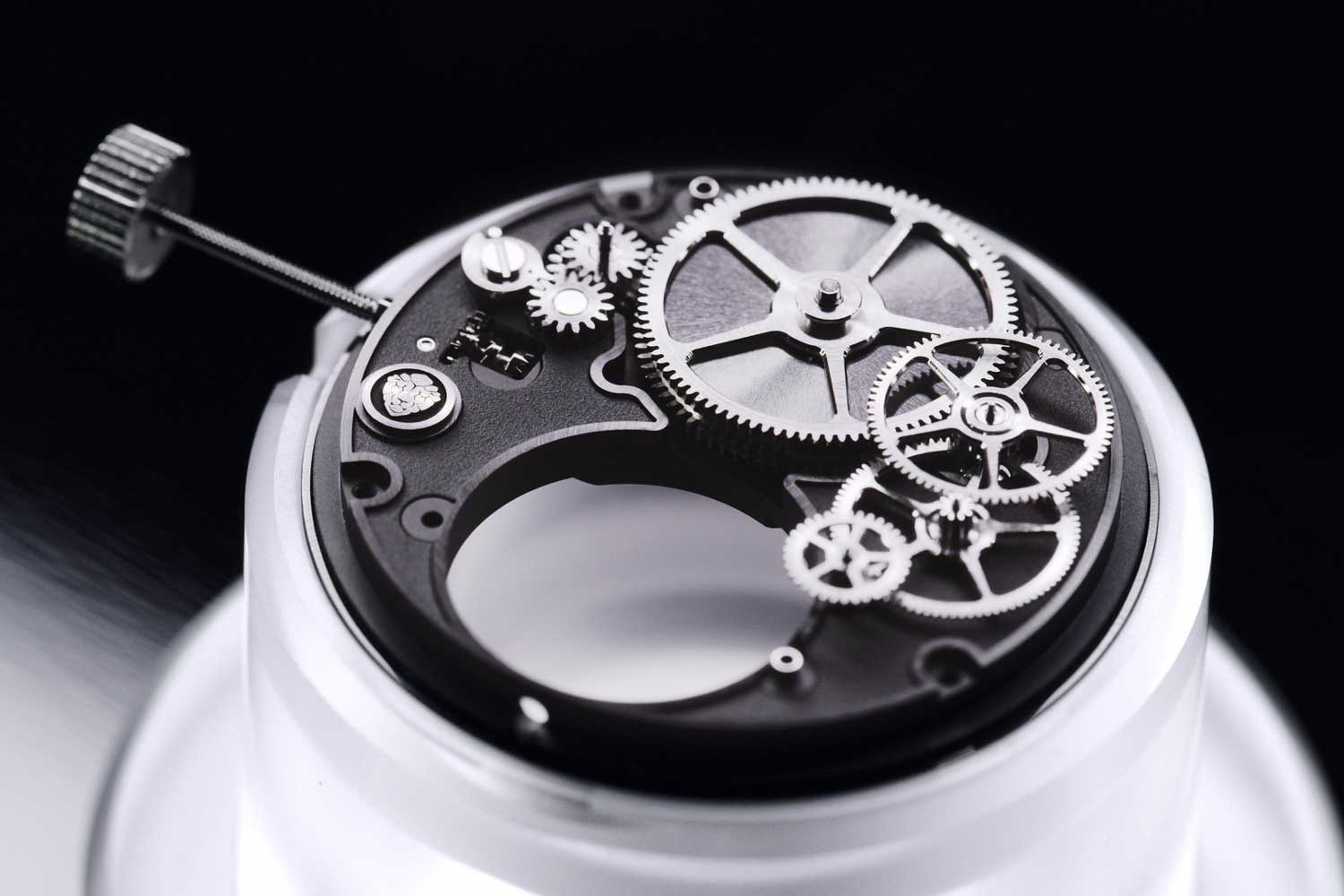
The wheel train of the caliber 5
The maximal size of the barrel is made possible as the watch features a dial that is offset from the central axis, with hands that are driven indirectly by an auxiliary train. Because the second wheel of the movement is located on the edge of the baseplate, additional gearing is required to redirect the minute information to the center of the offset dial. This is done by extending the arbor of the second wheel through the baseplate to carry an extension wheel (the solid wheel visible on the far left of the offset dial). This wheel then gears with an intermediate wheel, which in turn drives the cannon pinion and motion works exposed on the dial. Such a solution preserves the circular architecture of the movement, permitting the entire transmission system of the watch to be arranged in an unbroken visual flow when viewed from the caseback, from the winding mechanism all the way to the tourbillon.
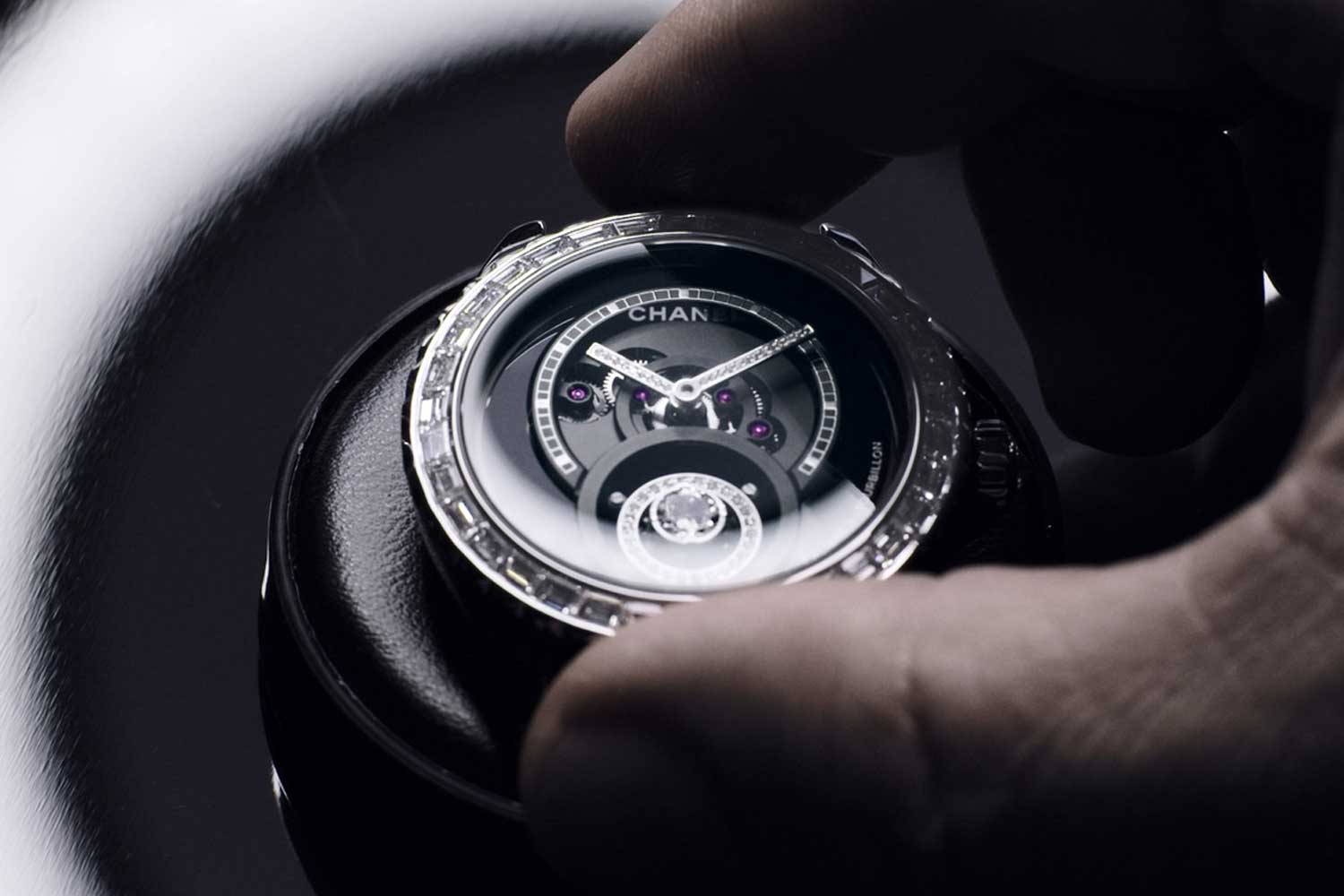
The bezel is paved with 34 baguette-cut diamonds in the glossy ceramic model
As a recap, a tourbillon houses the balance wheel and escapement in a carriage that rotates on a fixed fourth wheel. By design, the cage has a 60-second period of rotation which allows it to double as a small-seconds display. Because it is constantly revolving, the balance does not experience the downward pull of gravity in the vertical plane, as compared to a stationary oscillator, thereby producing a more uniform average rate.
In the Calibre 5, the tourbillon cage is cantilevered only at its base, without a bridge on its top pivot, giving the impression that it is unfixed and thus “flying”. Without an upper bridge, this configuration offers unobstructed views of the full carriage. And to amplify the effect, the tourbillon cage is set with 26 round brilliant-cut diamonds with a large 65-facet solitaire diamond positioned in its center, creating a dazzling spectacle as it rotates. A gem-set cage with a 60-second period of rotation is a technical challenge in itself as it requires additional solutions to counteract the additional inertia. It is coupled with a low-inertia balance wheel that beats at 4Hz, or 28,800 beats per hour, which is higher than the standard frequency in most tourbillon movements. All things being equal, a higher frequency balance maintains more stable timekeeping in a wristwatch as it is less susceptible to shocks caused by wrist motions.
Unity in Design
The movement alone would have been enough to make this an exceptional timepiece. But Chanel’s calling card — the triumph and perhaps the hardest aspect to emulate — is its knack for creating watches that are not only beautiful on the face of things, but also cohesive in their motivation and overall design.
A series of repeating, intersecting circles — reminiscent of Chanel’s interlocking double-C logo and a design choice of Arnaud Chastaingt — permeates all levels of the watch. The movement is a collage of rings, with wheels that are held in place by a large circular bridge, while the front of the watch is composed of interlocking circles on different elevations. They vary in size and texture, from the diamond-set tourbillon cage to the bridge that frames the exposed gearworks and tourbillon.
The J12 Diamond Tourbillon is presented in two versions, each limited to 55 pieces. The first one features a glossy black ceramic case with a white gold bezel while the other has a matte black ceramic case with a black-coated steel bezel. To further accentuate its circular architectural composition, the bezel is paved with 34 baguette-cut diamonds in the glossy ceramic version, and 34 black ceramic baguettes in the matte model. As with all in-house calibers, an emblem of a lion’s head — a nod to Coco Chanel’s zodiac sign — adorns the Calibre 5 as a homage to the designer.
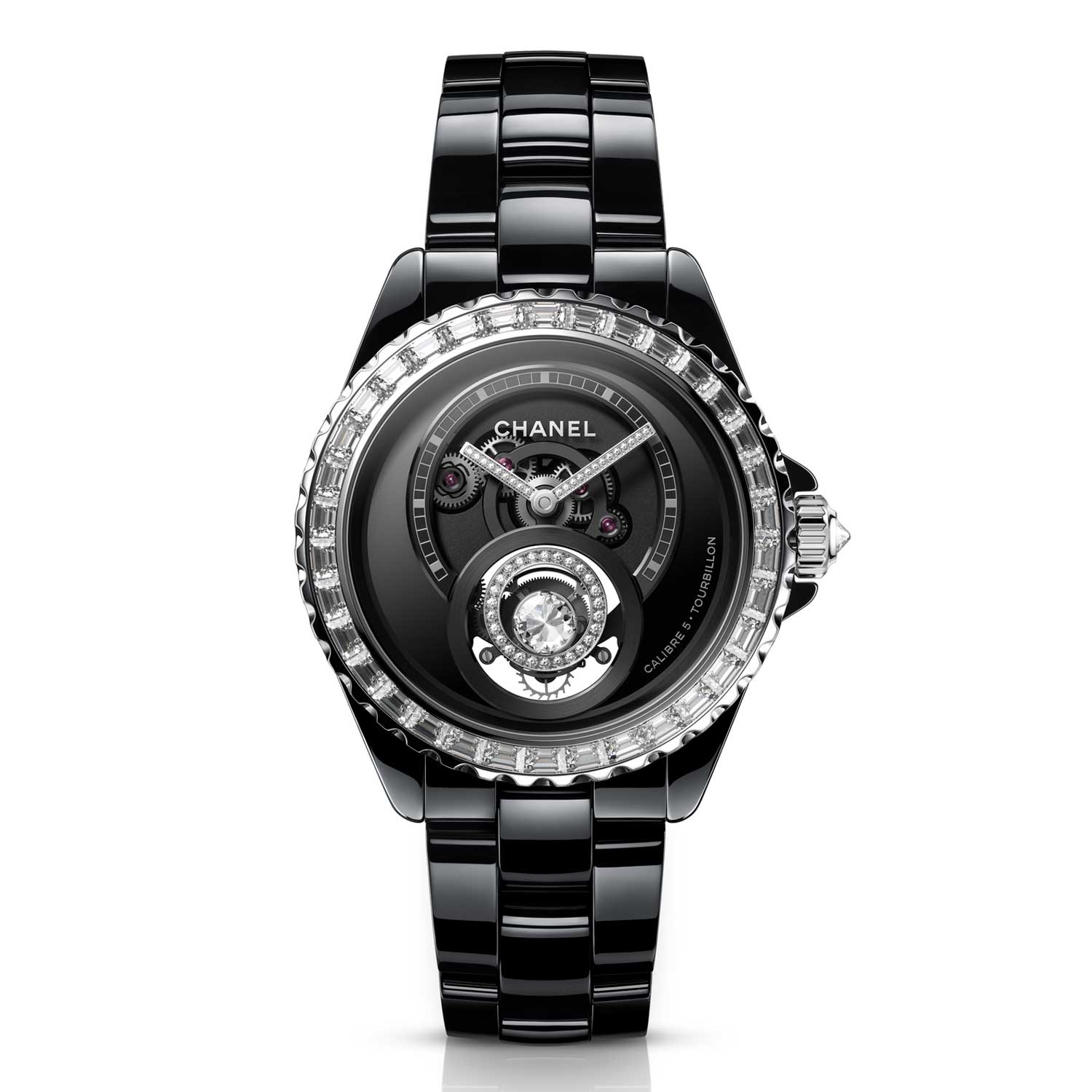
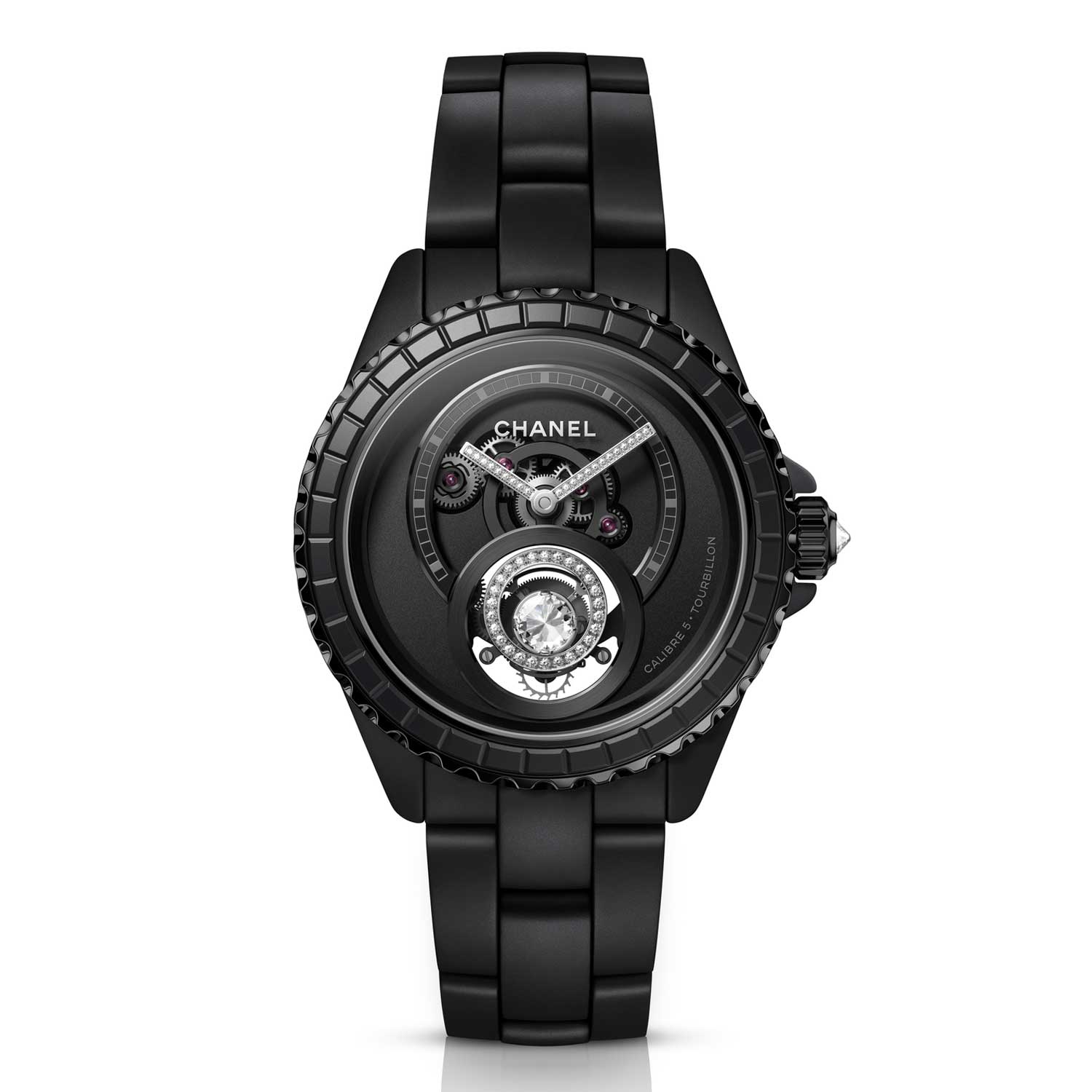
Tech Specs
Movement: Hand-wound Calibre 5; 48-hour power reserve; 4 Hz (28,800 vph)
Functions: Hours, minutes, flying tourbillon
Case: 38mm; black ceramic or matte black ceramic; water-resistant to 50m
Black Ceramic
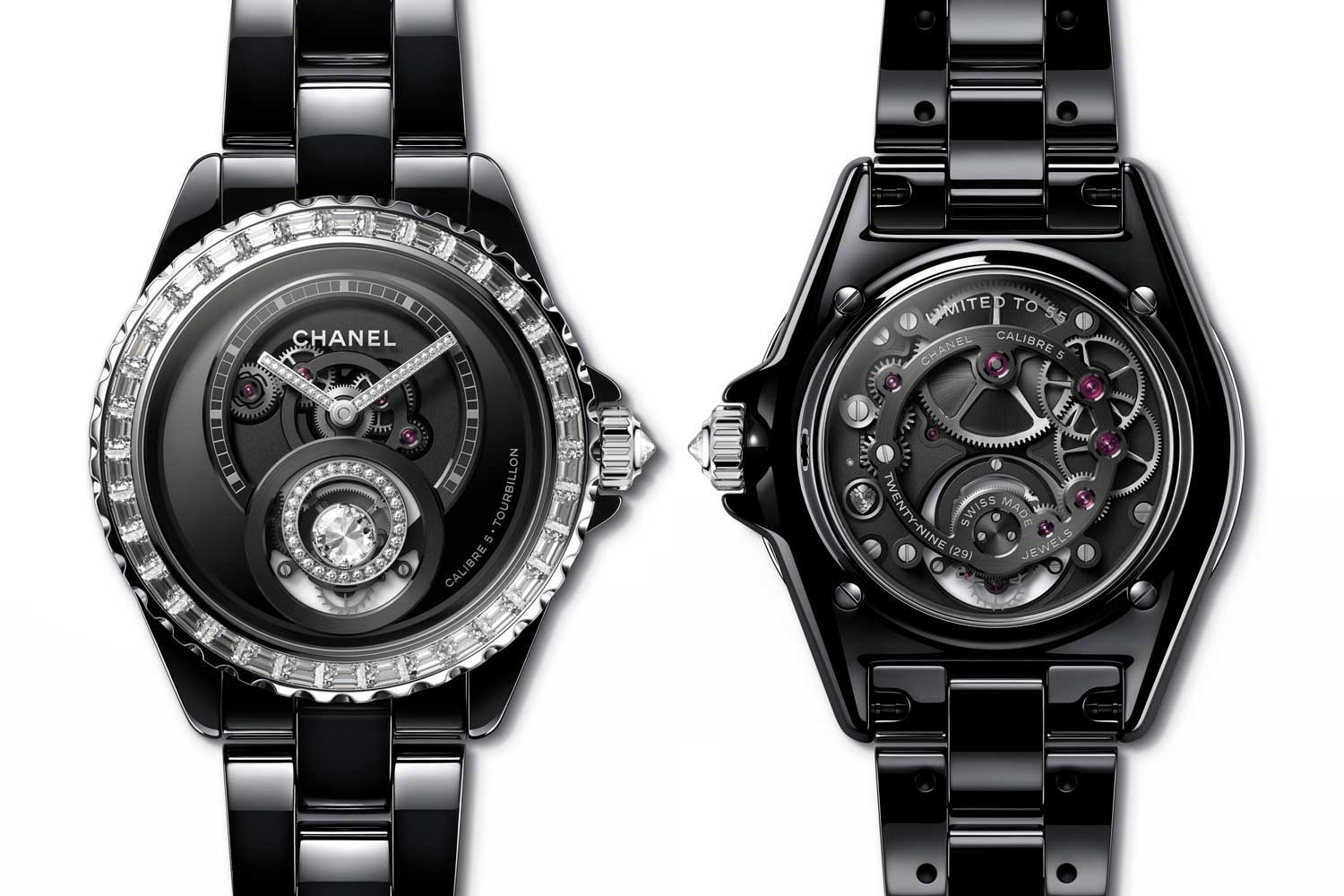
Diamonds: 34 baguette-cut diamonds (~3,50 carats), 49 brilliant-cut diamonds (~0,23 carat) and 1 solitaire diamond (~0,18 carat)
Bracelet: Black ceramic and 18K white gold triple-folding buckle
Price: € 160,000
Availability: Limited to 55 pieces
Matte Black Ceramic
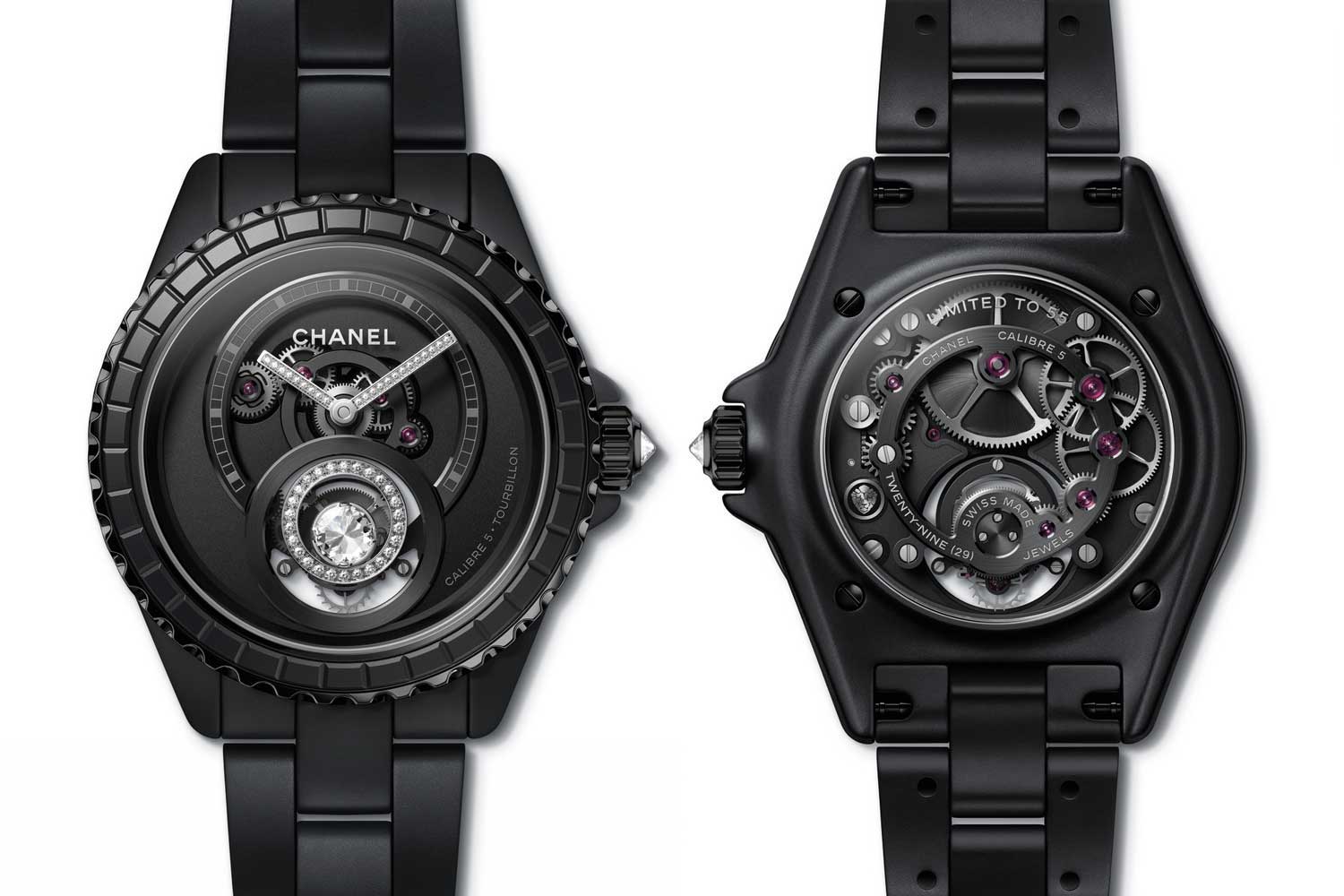
Diamonds: 49 brilliant-cut diamonds (~0,23 carat) and 1 solitaire diamond (~0,18 carat)
Bracelet: Black ceramic and steel white gold triple-folding buckle
Price: € 100,000
Availability: Limited to 55 pieces










